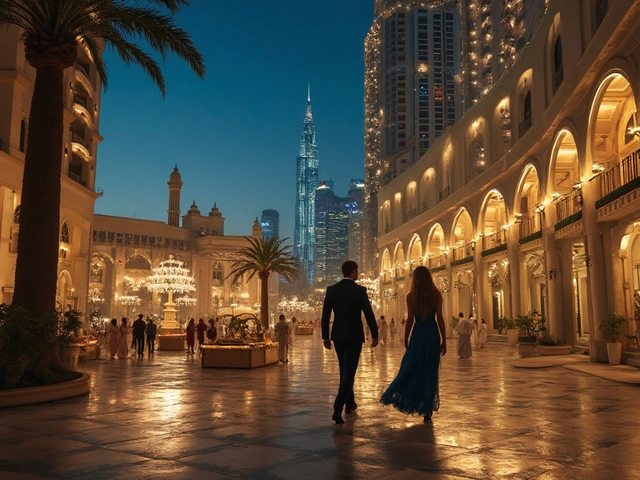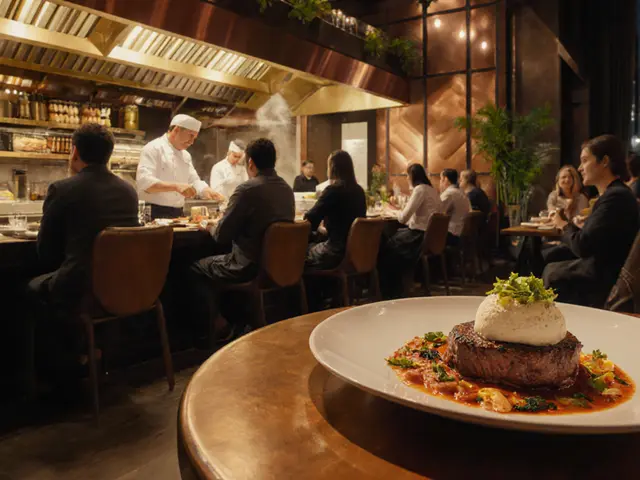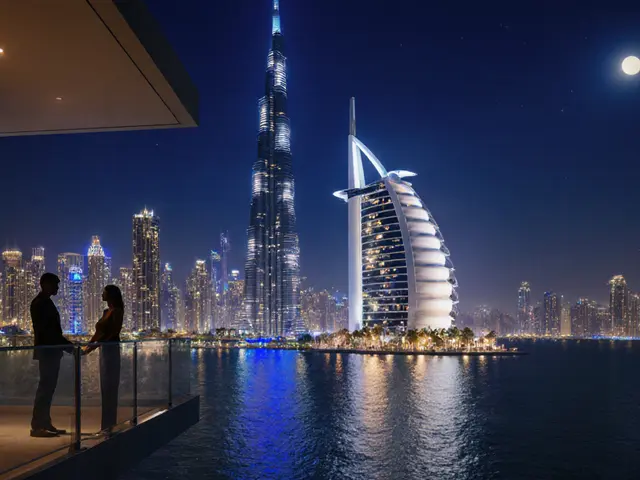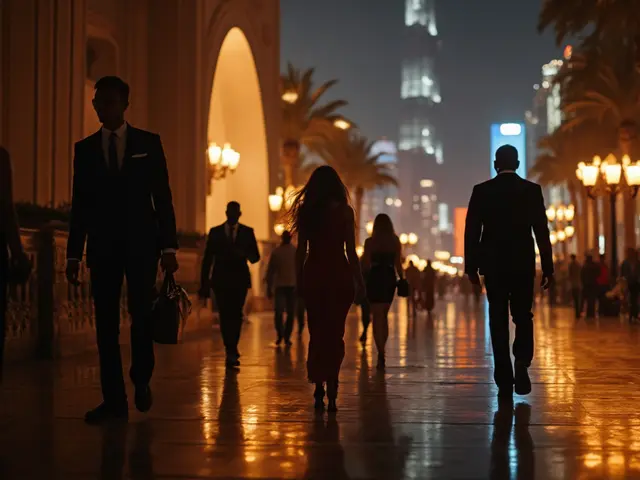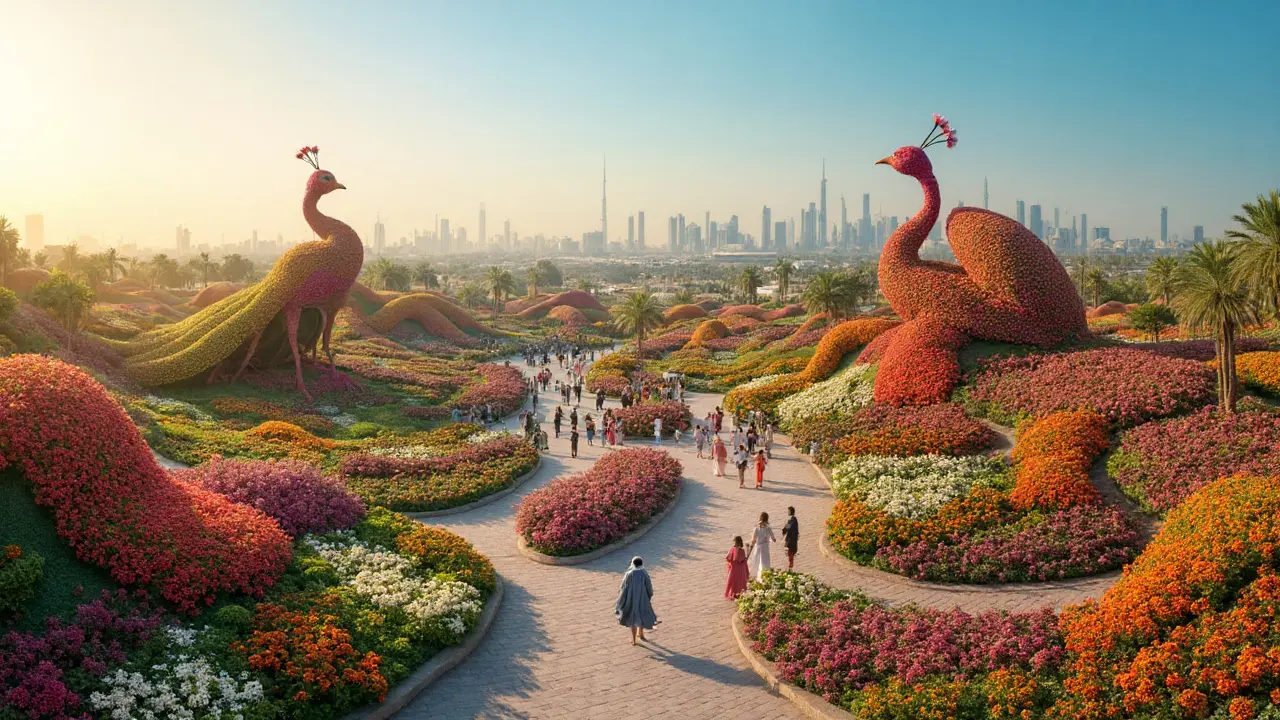
Thousands of colors explode around you, every direction a kaleidoscope, every turn a new world built out of petals. It's just a desert, right? Wrong. The Dubai Miracle Garden is a living, blooming contradiction—nature showing off in a city famous for doing the impossible. Forget what you know about gardens. Out here, 72,000 square meters usually burned by the Middle Eastern sun become the world’s largest flower garden. The numbers are wild: 150 million individual flowers, 120 different species, Guinness World Records, and displays so massive you wonder if they’re real. The scent of jasmine, petunias, and marigolds sweeps past crowds who squint at everything in disbelief or scramble for that iconic selfie spot. And no, the flowers aren’t fake.
From Desert Dust to Blooming Wonder: How Did Dubai Pull This Off?
Back in 2013, when it opened, skeptics had a field day. Building a floral paradise in a land where summer temps hit 50°C? Environmentalists raised eyebrows, gardeners rolled eyes, but Dubai does what it wants. Instead of importing gallons of water the old way, the entire garden runs on recycled water—about 757,000 liters per day—delivered through an intricate drip irrigation system. The design isn’t just about spectacle; it’s a technical feat. Insulation, shade structures, and meticulous planning keep everything from shriveling in the heat. Since the garden only opens between November and May, plants actually get a break from the most brutal temperatures. You see petunias cascading off frames shaped like castles, hearts, and even an Airbus A380—the largest floral installation on planet Earth, all covered in over 500,000 fresh flowers and living plants.
The soil? Imported. The plant varieties? Chosen for endurance against salt, sun, and sandy ground. Every season, new themes roll in—one year Disney-topiaries tower over kids and parents, the next year a huge Mickey Mouse or domes that look fresh off a Tim Burton movie set. The planning isn’t done months ahead, but more like year-round tinkering. If there’s a mistake or a wilting section, out it goes and in comes a fresh batch. There’s a full-time staff of 400, from landscape architects to horticulturists, whose daily job is to prune, plant, and monitor every irrigation valve.
Dubai didn’t just aim for big. They wanted world records. The Airbus A380 floral plane, for example, landed a Guinness World Record for largest flower installation in 2016. There’s a path shaped like a giant butterfly, the world’s largest topiary, and floral arches taller than the average giraffe. The garden morphs every year—nothing is ever the same. Come back in 2026, and you’ll find a totally new layout. Where else can you say that about a flower bed?
Breathtaking Attractions and Hidden Corners: What Not to Miss
If you think Miracle Garden is just rows of flowers, you’re missing the magic. The real pull is the creativity. There’s an avenue of heart-shaped arches dripping in blooms that’ll outsparkle any Valentine’s Day plan. A walk beneath them feels like strolling through the world’s most romantic tunnel—no filter needed, and yes, it’s packed with selfie sticks. At the Butterfly Garden—a separate, domed zone next to the main park—you’ll spot over 15,000 butterflies, their wings echoing the flower colors outside. It’s cool inside and very, very Instagrammable.
Then there’s the Floral Clock, a 15-meter-wide working clock made entirely from living flowers, with mechanics imported from the US and a face that changes seasonally. Kids and families swarm the Disney Avenue, where the world’s tallest topiary—an 18-meter Mickey Mouse—presides over a landscape straight from childhood imagination. If you want to unwind, sit at the cabanas hidden behind thick walls of bougainvillea; it’s about the only place in Dubai where you’ll be surrounded by birds and zero traffic sounds.
Some corners get less attention but are just as wild. Look for the peacock topiaries and the upside-down floral houses. There’s a giant teddy bear filled with marigolds that has quietly become one of the most photographed features around. Want a full panorama? The viewing hill is the spot, offering the perfect angle to take in the entire garden’s scale.
Among the quirky installations sits a row of food kiosks—nothing fancy, just corn on the cob, fresh juices, shawarma, and ice cream to keep you moving. Entry to the Butterfly Garden isn’t included with the Miracle Garden ticket, by the way, so budget for that extra stop. If you want to escape the crowds, weekday mornings are your best bet. Avoid weekends and public holidays unless you love human traffic jams—February is peak photo season, but it’s also the busiest.
| Top Attractions | Must-See Features |
|---|---|
| Airbus A380 Floral Plane | 500,000+ flowers, Guinness world record |
| Heart-shaped Arch Walk | Great for photos, early mornings best |
| Floral Clock | 15-meter, changing flower face |
| Butterfly Garden | 15,000 butterflies, air-conditioned domes |
| Disney Avenue | 18m Mickey Mouse, family favorite |
| Panorama Hill | Best garden views, sunsets are magical |

Essential Facts and Insider Tips for Your Visit
No one tells you how big the Miracle Garden actually is—it’s a full-day affair if you want to see every corner. Wear comfy shoes, or you’ll regret it by midday. Plan for the heat; even in winter, Dubai’s sun is unforgiving. Hats, sunscreen, and a refillable water bottle are musts. The garden doesn’t allow outside food, but there are enough snack stalls to keep you fed. Tickets are cheaper for kids under 12 and free for children under 3. Most visitors pair their trip with a stop at the Butterfly Garden; grab a combo ticket to avoid two separate lines.
Photo ops are endless, but the best times to come are early morning or just before sunset—the light makes the flowers look surreal and the crowds are manageable. Drones are banned, so leave them at home. Though it seems like paradise for spontaneous pics, tripod setups aren’t allowed unless you have special media permission. Some seasons bring themed events: think live music, floral parades, or workshops about sustainable gardening. If you want to catch something extra cool, check the Miracle Garden’s website for event dates in advance.
You don’t have to be a flower lover to enjoy this place. Travelers looking for unique experiences, architecture buffs, families with kids, new Instagrammers—there’s something for everyone. For anyone allergic to pollen, keep antihistamines handy. There’s no smoking inside, and you won’t find alcoholic drinks either (you’re still in Dubai). Parking is free but competitive on weekends; taxis and ride-shares are better. Lockers for bags aren’t available, so pack light.
Want a quirky fun fact? The uniforms staff wear echo the colors of blooming petunias each year. And if the scent of flowers gets overwhelming, there are shaded rest stops every 200 meters—necessary, given the size. If you get lost, don’t worry. The place is mapped out with signposts in English and Arabic, and staff are actually helpful—ask them for shortcuts to the main attractions if you’re short on time. Wi-Fi is spotty, but the flower power is very real.
| Travel Tip | Details |
|---|---|
| Best Time to Visit | November to March, weekdays, morning/evening |
| Opening Hours | Usually 9am-9pm (check every season) |
| Entry Fee | Approx. AED 55 adults, AED 40 kids (as of 2025) |
| Facilities | Restrooms, food stalls, shaded areas, seating |
| Photo Spots | Heart Arches, Floral Plane, Panorama Hill |
Why Dubai Miracle Garden Stands Out in the World
The Miracle Garden isn’t just big; it’s louder and wilder than any other botanic experience out there. This isn’t London’s Kew or Sydney’s Royal Botanic Gardens. Here, flowers become dragons, planes, and cartoon giants—Dubai-style. Holding onto its Guinness World Record for largest vertical garden and the largest floral installation doesn’t happen by accident. The place reinvents itself every year. Even regulars walk in and get totally surprised by layout flips and new centerpieces.
But what’s really cool? The sustainability side rarely gets spotlighted, but it should. Those 757,000 liters of recycled water each day aren’t just a technical detail—they mean the whole garden runs as efficiently as possible for a city that barely gets rain. Staff check irrigation lines and moisture levels several times daily to keep wilt at bay. The garden actually boosts Dubai’s biodiversity, attracting pollinators—local bees, butterflies, and tiny birds you wouldn’t expect in a desert. It’s one of the greenest spots on the map (pun intended), sitting smack in the middle of modern skyscrapers and sandy flats.
The Miracle Garden even influences local culture. Couples propose here and families come for reunions. Fashion shoots and Bollywood films use it as a backdrop. It’s a strange, dream-like bit of escapism in a world that can feel too gray, proving that you really can turn the impossible into the spectacular. The garden’s ever-changing displays mean locals return almost as much as tourists. Missing out on Miracle Garden isn’t just skipping a photo op—it’s passing on proof that Dubai can push nature further than anyone dreams. If you want a hit of color, hope, and a little bit of madness, this is the spot.
Ready for a billion blooms? Grab a camera, lace up those shoes, and keep your eyes wide open—because in Miracle Garden, even the statues grow flowers.
